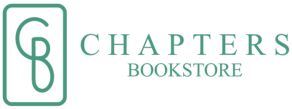German Expressionists were uneasy and angry. Emerging at the dawn of the 20th century, they railed against Christian and bourgeois values as much as rampant urban industrialization. Anti-imperialist, they were dispersed, shattered, and depleted by the horrors of the First World War, and rallied their efforts only to be officially erased by the Nazi "Degenerate Art" exhibition of 1937.
In this comprehensive TASCHEN collection, Head of the Gerhard Richter Archive Dietmar Elger gathers the many artists and elements of this urgent, scattered, complex movement into one authoritative overview of its protagonists, principles, and essential role in 20th-century modernism. Finding a critical calm amid the frenzy of color and distortion, the book distills Expressionism's leading collectives, Die Brucke and Der Blaue Reiter, as well as its regional characteristics across its Berlin and Munich hubs, and its North German, Rheinland, and Viennese variants.
Along the way, we compare and contrast themes and stylistic choices as this dispersed group of artists wrestled with their modern industrial reality. We find luminous streaks from Wassily Kandinsky, and the sickly hues of Ernst Ludwig Kirchner, the futurist facets of Franz Marc, and a partial Impressionist throwback in the gaudy dabs of Emil Nolde. We walk into seedy bars with bloated old men, and then enter a claustrophobic yellow room occupied by an awkwardly posed nude. We are crushed in a cacophony of city sound and smoke, and then left alone with woods, a lake, and silence.
Spanning this richness and range in Expressionist output, Elger features such well-known figures as Beckmann, Kandinsky, Kirchner, Kokoschka, Nolde, Schiele, while taking care to present inadequately studied artists such as Conrad Felixmuller, Ludwig Meidner, and Marianne von Werefkin. The result is an expansive, inclusive, dependable digest of a vivid, often violent mode of expression, and the yearning and unease behind its frenzied paintwork.
- Publisher Name:Taschen GmbH
- Product Format:Hardback
- ISBN: 9783836520058
- Author:Elger, Dietmar
- Publication Date:2017-12-15
If you are not satisfied with your order in any way, get in touch. We have an excellent customer service record and we will do our best to ensure you are pleased with your purchase.
We are happy to refund a product if it is defective, within 30 days of purchase upon the return of your product. If you return a product to us and request a refund due to an error on our part we will be happy to pay for the postage cost to return it to us.
To be eligible for a return, your item must be in the same condition that you received it, unworn or unused & unread, and in its original packaging. You’ll also need the receipt or proof of purchase.
Please note, if you are requesting a refund based on an issue with condition we kindly ask you to provide a photo in order for us to best advise a suitable resolution.
To start a return, you can contact us at shop@chaptersbookstore.com. If your return is accepted, we’ll send you a return shipping label, as well as instructions on how and where to send your package. Items sent back to us without first requesting a return will not be accepted.
You can always contact us for any return question at shop@chaptersbookstore.com.
Damages and issues
Please inspect your order upon reception and contact us immediately if the item is defective, damaged or if you receive the wrong item, so that we can evaluate the issue and make it right.
Exceptions / non-returnable items
Certain types of items cannot be returned, like custom products or special orders. Unfortunately, we cannot accept returns on sale items or gift cards.
Exchanges
The fastest way to ensure you get what you want is to return the item you have, and once the return is accepted, make a separate purchase for the new item.
Refunds
We will notify you once we’ve received and inspected your return, and let you know if the refund was approved or not. If approved, you’ll be automatically refunded on your original payment method. Please remember it can take some time for your bank or credit card company to process and post the refund too.
Free Delivery in the Republic Of Ireland on all orders over €30. Standard Delivery Charge in Republic of Ireland of €5 for all orders below €30.
Delivery is subject to warehouse availability. Out-of-stock items will be shipped as soon as possible, upon arrival from the manufacturer/publisher. Please take shipping time into consideration.



![Rubin, Rick MUSIC Rick Rubin: The Creative Act: A Way of Being [2023] hardback](http://chaptersbookstore.com/cdn/shop/files/rubin-rick-rick-rubin-the-creative-act-a-way-of-being-2023-hardback-56888283332947_{width}x.jpg?v=1719073387)

![Moorhead, Joanna ART Joanna Moorhead: The Surreal Life of Leonora Carrington [2017] paperback](http://chaptersbookstore.com/cdn/shop/files/moorhead-joanna-joanna-moorhead-the-surreal-life-of-leonora-carrington-2017-paperback-57654797533523_{width}x.jpg?v=1727909581)
![Laing, Olivia LITERARY CRITICISM Olivia Laing: Funny Weather: Art in an Emergency [2021] paperback](http://chaptersbookstore.com/cdn/shop/files/laing-olivia-olivia-laing-funny-weather-art-in-an-emergency-2021-paperback-52950980428115_{width}x.jpg?v=1700130734)
![Geis, Patricia BARGAIN ART New Patricia Geis: Meet the Artist Vincent van Gogh: Meet the Artist! [2015] hardback](http://chaptersbookstore.com/cdn/shop/files/geis-patricia-patricia-geis-meet-the-artist-vincent-van-gogh-meet-the-artist-2015-hardback-9781616894566-58847872483667_{width}x.jpg?v=1726818615)